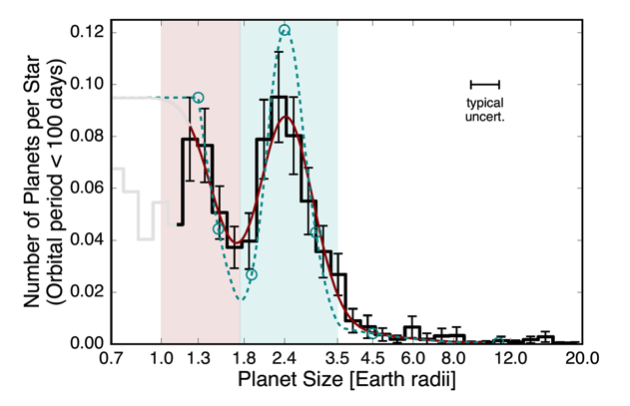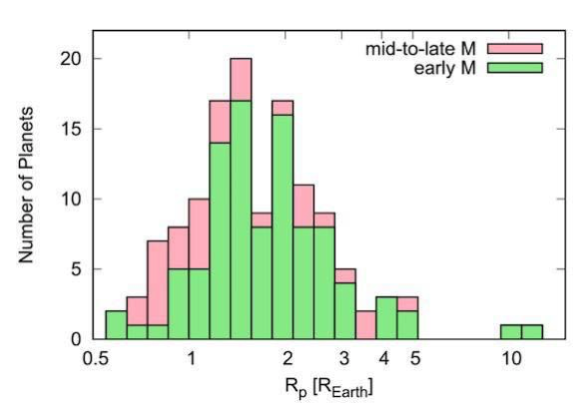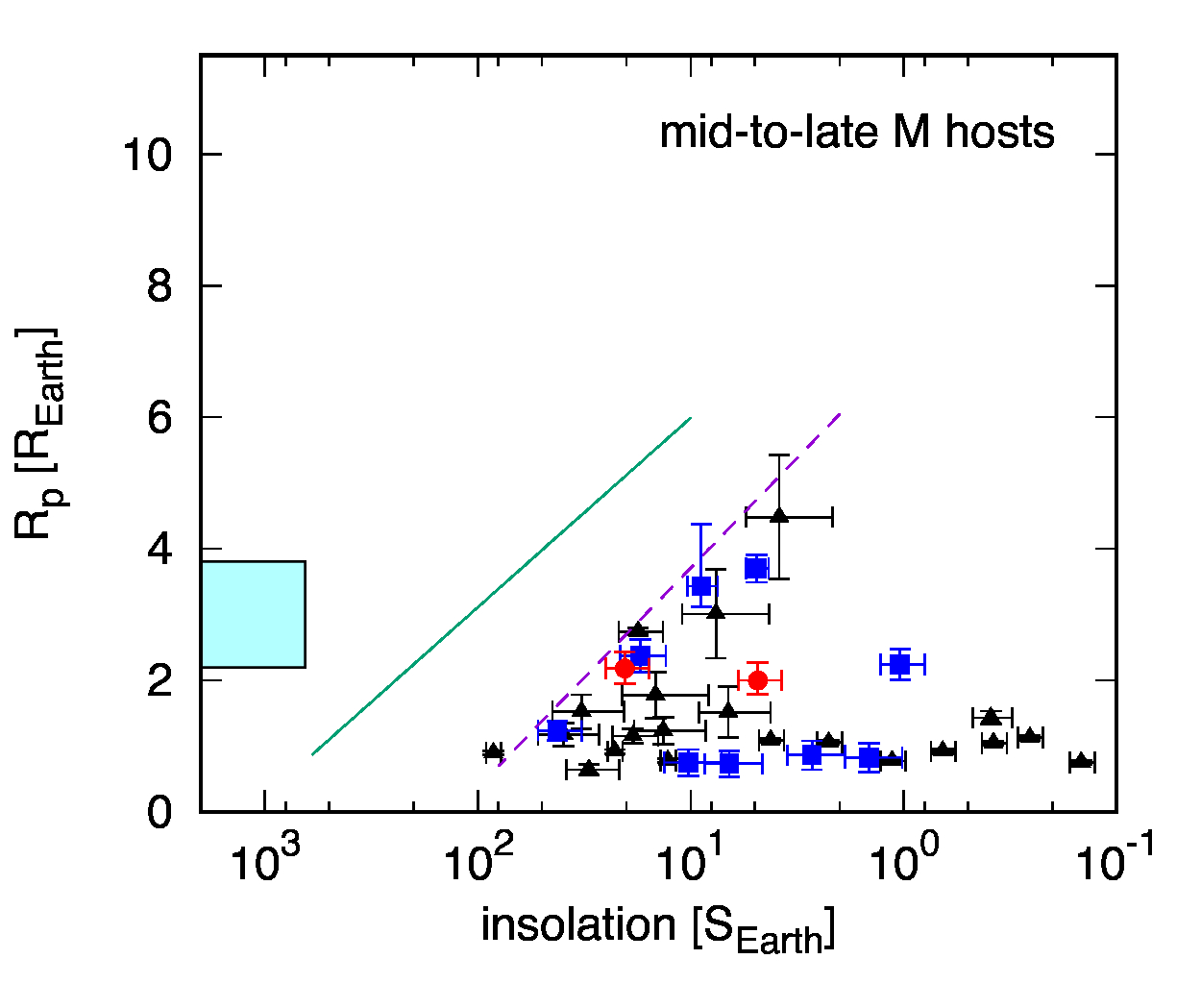The Radius Gap
In 2017, the California Kepler Survey ( Fulton et al 2017) revealed that small-planet radii follow a bimodal distribution (see below). One leading explanation is photoevaporation driven by high-energy radiation: EUV and X-rays heat planetary atmospheres and drive mass-loss outflows ( Owen and Wu 2013, Lopez and Fortney 2014, Owen and Wu 2017). The lower peak of the distribution corresponds to rocky cores whose H/He envelopes have been completely stripped. Since stellar high-energy output declines after the first 100 Myr of the star's lifetime ( Ribas et al 2005), larger planets with thicker envelopes may retain a few percent of H/He by the time photoevaporation shuts down. Even such thin envelopes are sufficient to inflate planetary radii, pushing them into the upper peak of the distribution.
An alternative explanation was proposed by Ginzburg et al 2017: alone can drive significant atmospheric loss, thereby carving out the observed radius gap. Ginzburg et al 2017 further proposed that a simple way to distinguish 1) photoevaporation and 2) core-powered atmospheric loss is to examine the radius distribution across different stellar types. Since photoevaporation is powered by high-energy radiation, it should show a strong dependence on stellar type, as stars emit differing fractions of their energy at high energies. By contrast, core-powered mass loss should depend only on bolometric insolation (i.e., planetary equilibrium temperature) and thus be largely independent of stellar type.


To compare photoevaporation and core-powered mass loss, we examined the radius distribution of planets around M dwarfs, which are more active than Sun-like stars and emit a larger fraction of their energy in high-energy radiation. In our recent work (Hirano, Dai et al 2017 ), we reported 16 new planets around M dwarfs which represents a substantial addition to existing sample ~80 planets around M dwarf. Because spectroscopic parameters of M dwarfs are notoriously difficult to measure, we also carried out a uniform analysis of all known M-dwarf planets. The radius gap is clearly present in this population as well, indicating that the mechanism responsible must also operate for M-dwarf systems.
Photoevaporation Desert
We then investigated the location of the so-called “photoevaporation desert” which is a lack of planet between 2-4R⊕ at the highest insolation level. For Sun-ike the photoevaporation desert identified by Lundkvist et al 2016 has a boundary at about 650 Earth insolation level F⊕.

We made similar plots for M-dwarf planets splitting between early M dwarf and mid-late M dwarfs (Teff = 3500K). Note that the blue box corresponds to the “photoevaporation desert” identified by Lundkvist et al 2016 around Sun-like stars. We can see that the “photoevaporation desert” occurs at a lower bolometric insolation level compared to Sun-like stars. In other words, M dwarfs seem to be more effective at reducing the size of their planets, a telltale sign that photoevaporation is the main driver for the radius gap. By contrast, if core-powered mass loss dominated, the desert would occur at the same bolometric insolation regardless of stellar type. This shift cannot be explained by selection effects, since closer-in, larger planets are easier to detect in transit surveys. Three notable outliers include HATS-6b and Kepler-45b, both hot Jupiters whose strong gravity suppresses efficient photoevaporation, and K2-33, a young (~10 Myr) system likely still undergoing atmospheric loss.

